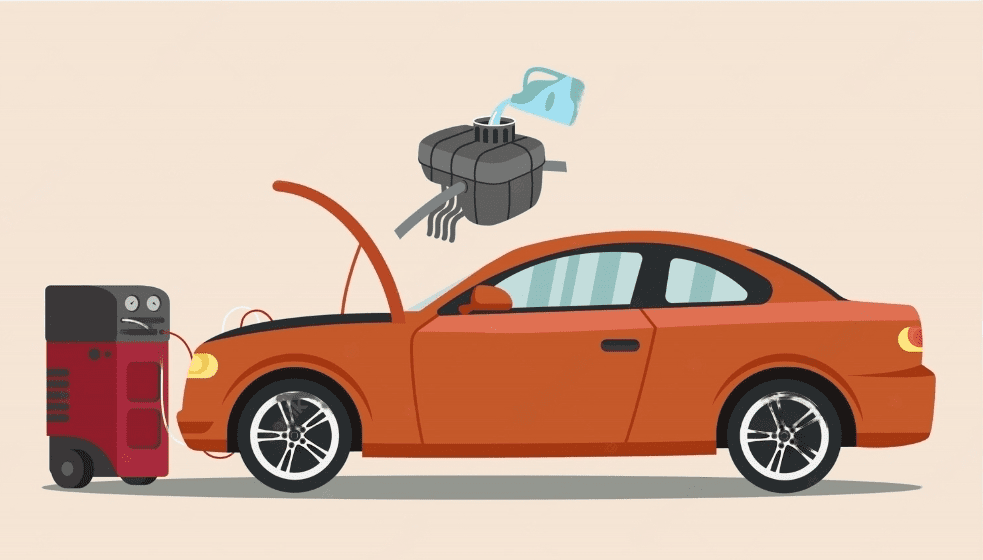
Are you experiencing strange engine behavior, sudden stalling, or difficulty starting your vehicle? If so, it’s possible that your fuel pump is to blame.
A faulty fuel pump can wreak havoc on your car’s performance and leave you stranded on the side of the road.
But don’t worry – in this comprehensive guide, we’ll explain everything you need to know about bad fuel pump symptoms. From the telltale signs to the potential causes and solutions, we’ve got you covered.
Whether you’re a seasoned car enthusiast or a novice driver, understanding these symptoms can help you diagnose and address the issue before it becomes a major problem.
Read on to discover the most common bad fuel pump symptoms and what they mean for your car’s performance.
11 Most Common Bad Fuel Pump Symptoms
Recognizing the signs of a bad fuel pump is not always straightforward. Often, the symptoms can be subtle and easily mistaken for other car problems. Here are the 11 most common bad fuel pump symptoms you should be aware of:
1. High Temperature. One of the first signs of a failing fuel pump is an increase in the engine’s temperature. If your vehicle’s temperature gauge shows higher than normal readings regularly, it might indicate a problem with the fuel pump.
2. Engine Sputtering. If your engine sputters or jerks during high speeds, this could be a sign of an inconsistent flow of fuel to the engine, which is often caused by a failing fuel pump.
3. Power Loss. A faulty fuel pump may cause your vehicle to lose power while accelerating. This is due to the inability of the fuel pump to keep up with the demands of the engine at higher speeds.
4. Car Not Starting. While there could be many reasons why your car won’t start, a bad fuel pump could be one of them. If the pump is unable to deliver fuel to the engine, the car will not start.
5. Noise in the Fuel Tank. An unusually loud whining noise coming from the fuel tank is another sign of a bad fuel pump. This noise often gets louder as the pump works harder to deliver fuel.
6. Poor Fuel Efficiency. If you notice that your vehicle’s fuel efficiency has decreased significantly, this could be a sign of a failing fuel pump. When the pump is not working properly, it may consume more power, resulting in decreased fuel efficiency.
7. Engine Misfire. Misfiring can occur when the fuel pump cannot supply enough fuel to the engine, causing one or more engines to fire too late or not at all. This can result in a rough idle or difficulty starting the car.
8. Stalling at High Temperatures. A bad fuel pump may cause your vehicle to stall when it gets hot. This happens because a faulty pump might struggle to supply enough fuel to the engine under high-temperature conditions.
9. Vehicle Surges. Another symptom of a problematic fuel pump is when your vehicle surges forward for no apparent reason. This happens when the pump occasionally delivers too much fuel, causing the car to surge forward and then slow down.
10. Acceleration Issues. If you experience problems with your vehicle’s acceleration, this could be due to a failing fuel pump. When the pump is unable to deliver the necessary amount of fuel, the vehicle may struggle to accelerate as it should.
11. Failure to Meet Emission Standards. Lastly, if your vehicle fails an emissions test, it could be due to a bad fuel pump. A malfunctioning pump can cause the engine to run rich (too much fuel relative to air), leading to higher levels of harmful emissions.
A bad fuel pump can manifest itself in many ways, and recognizing these symptoms can save you from potentially costly repairs or even dangerous situations. It’s essential to pay attention to any changes in your vehicle’s performance, such as increased engine temperature, sputtering at high speeds, power loss, unusual noises, and poor fuel efficiency.
Additionally, more severe signs like the car not starting, engine misfires, stalling at high temperatures, sudden surges, acceleration issues, and failure to meet emission standards should not be ignored. If you notice any of these bad fuel pump symptoms, it’s recommended that you consult with a professional mechanic immediately.
Remember, your vehicle’s fuel pump is like its heart, and just like a heart, when it’s not working correctly, the whole system suffers. Regular maintenance and prompt attention to potential problems will ensure your vehicle remains in good health, providing you with a reliable and safe ride.
Repair Options for a Bad Fuel Pump
Once you’ve diagnosed that your vehicle is exhibiting bad fuel pump symptoms, it’s time to explore the repair options. Depending on the severity of the damage, there are a few paths you can take:
1. Fuel Pump Replacement: The most common solution for a bad fuel pump is to replace it. This is usually recommended when the pump is severely damaged or worn out. While this option might seem costly upfront, it can prevent future breakdowns and potential damage to other components of your car. It’s worth noting that most fuel pumps are designed to last well past 100,000 miles under normal conditions.
2. Fuel Pump Repair: In some cases, if the damage to the fuel pump is not severe, it may be possible to repair it. This could involve replacing the faulty parts of the pump. However, this is typically only a temporary solution and may not address the underlying issue.
3. Fuel System Cleaning: Fuel system cleaning is crucial for maintaining the efficiency and performance of your vehicle. Over time, carbon deposits and other residues can build up in the fuel system, leading to reduced power and performance, poor fuel economy, and even potential damage to the engine.
Regular fuel system cleaning can help prevent these issues by ensuring that the fuel system components, such as the fuel injectors and fuel pump, are free from blockages and functioning optimally. It’s often recommended to perform a fuel system cleaning every 15,000 miles, depending on the configuration of your injectors, to maintain peak engine performance.
4. Regular Maintenance: To prevent future problems, regular maintenance of the fuel pump and the entire fuel system is crucial. This includes regular inspections, cleaning, and timely replacements of worn-out parts.
Remember, dealing with a bad fuel pump is not a DIY job unless you have advanced knowledge of vehicle mechanics. Always consult with a professional mechanic or service center for any repairs or replacements related to the fuel pump.
Wrapping Up
In conclusion, understanding the symptoms of a bad fuel pump is essential for every car owner. From high engine temperatures to sudden surges and stalling, these signs can indicate a potentially serious issue that requires immediate attention.
Your vehicle’s fuel pump is like its heart, and neglecting its health can lead to costly repairs and unsafe driving conditions. Regular maintenance and prompt action when you notice any of the symptoms can save you from headaches down the road.
When faced with a bad fuel pump, remember that professional help is the best option. Whether it’s fuel pump replacement, repair, or fuel system cleaning, relying on a trusted mechanic like HEART Auto Care can ensure your vehicle stays reliable and safe.
So, don’t ignore the warning signs. Take action, and let HEART Auto Care take care of your fuel pump needs. With their expertise and commitment to proactive care, you’ll enjoy worry-free driving and a smooth ride. Drive with confidence, knowing that your vehicle is in the best hands possible. Stay informed, stay proactive, and enjoy the road ahead!





